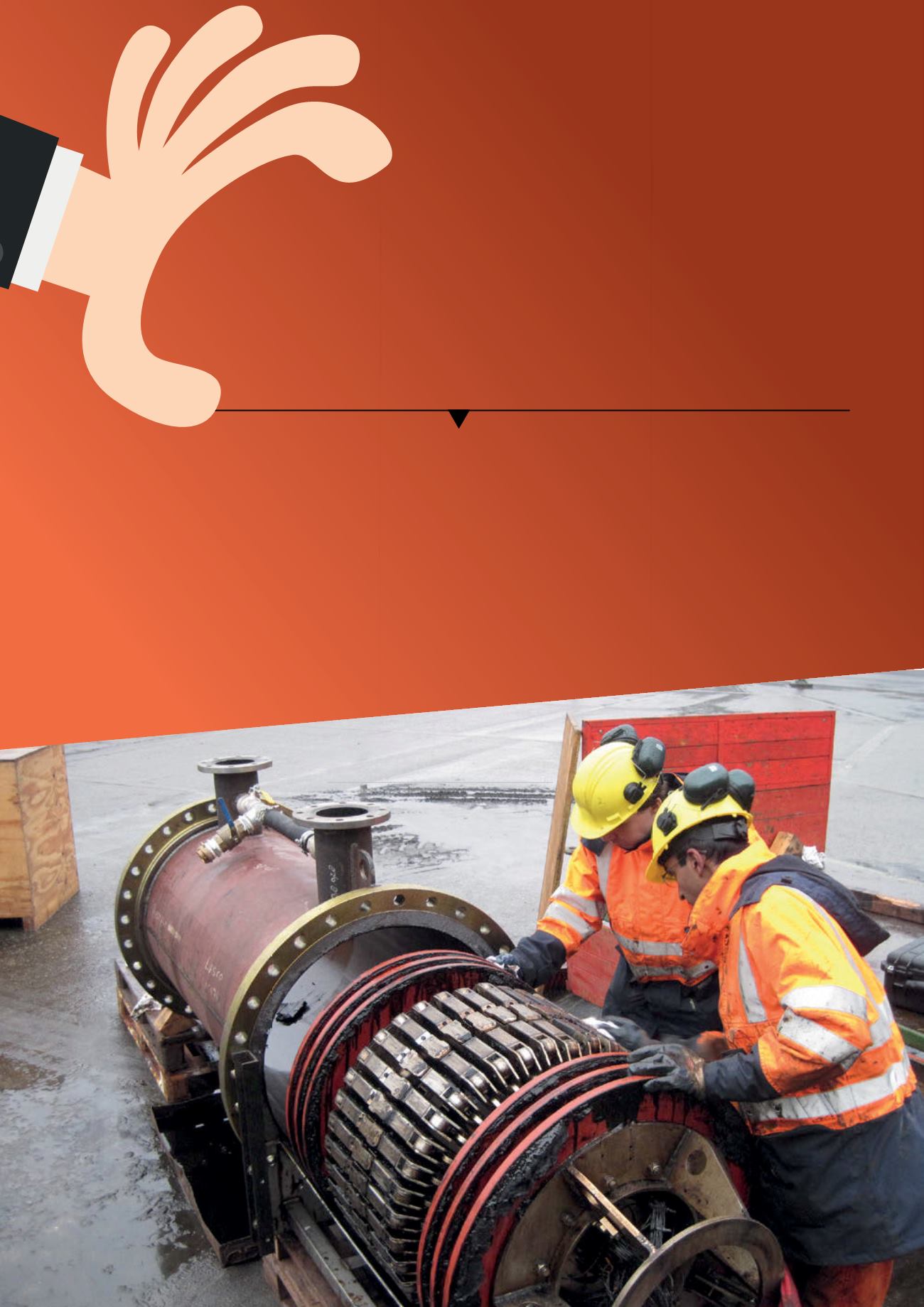
Peter van Beugen, Managing Director of Pipesurvey
International, the Netherlands,
presents challenging pipeline
scenarios and examines how difficult to pig pipelines are now
within the scope of pipeline inspection and integrity management.
L
ooking back at a few decades of intelligent pigging, it is amazing what the industry has achieved. Accurate and free flowing
inspection tools using high sensitivity sensors and special-design onboard electronics operate in harsh environments to
collect faultless data sets. Starting from the outset on long distance and crucial transmission lines, the industry has now
moved its focus towards the so-called non-piggable or difficult-to-pig pipelines.
Low flow pipelines
A typical example of such a line is the 20 in. x 84 km pipeline that brings crude oil from the North Sea to the onshore storage and
processing plant. The pipeline has been in operation since the 1970s and the field has exhausted.
Currently, the export pipeline is operating at a velocity of 0.03 - 0.04 m/s and maximum 7 - 8 barg operating pressure.
Calculated over a distance of 84 km, this results in a pigging run time of 27 days. It goes without saying that this is a real challenge,
both for the cleaning and inspection of the pipeline. A small leakage across the pig may result in loss of propulsion and the pig
may get stuck. If debris accumulates in front of the cleaning pig, drive-pressure
on non-piggable pipelines
GETTING A GRIP
Figure 1.
A 30 in. bi-directional tool
with temporary pipe spool upon
completion of a first inspection run.
49


